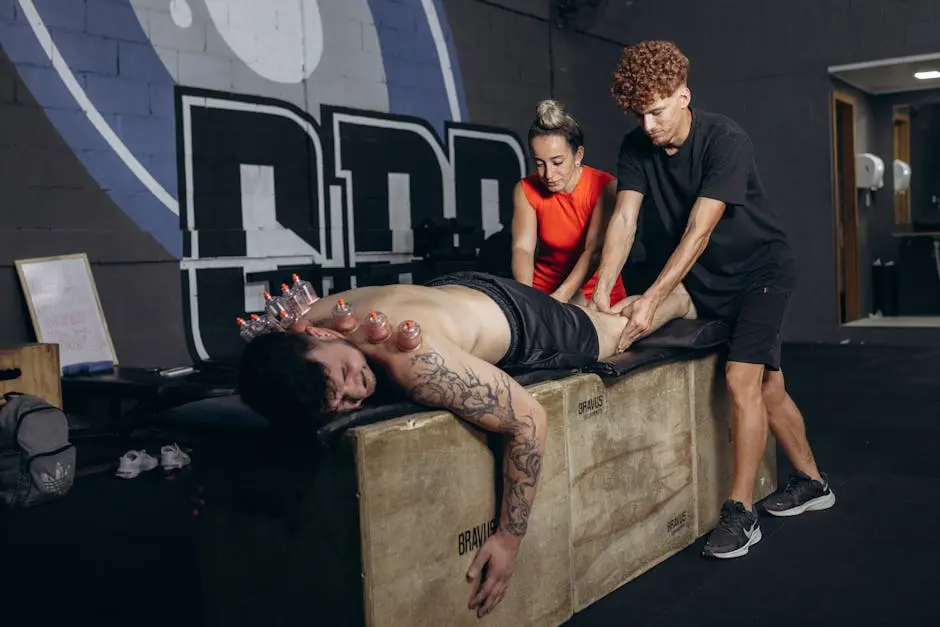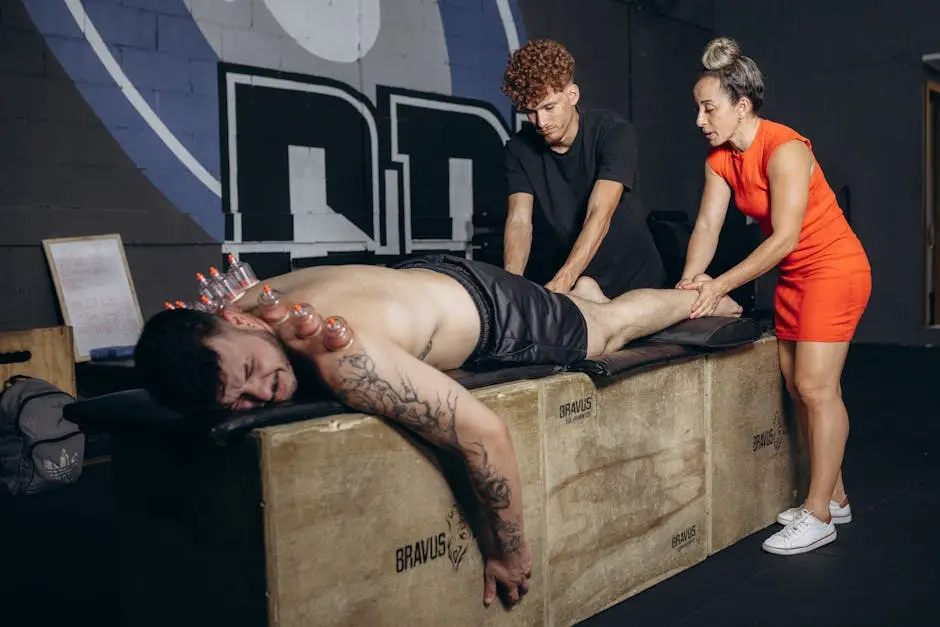Pain is often an unwelcome companion for athletes, whether you’re a seasoned pro or just starting your fitness journey. Finding effective techniques to manage that pain can make a significant difference in performance and recovery. In this blog, we’ll explore twelve essential pain management strategies every athlete can benefit from, ensuring you’re back in the game as quickly and safely as possible.
1. Understanding the Importance of Pain Management
Grasping why pain management is vital in sports helps athletes understand their bodies and training better.
Pain isn’t solely a limitation; it can also be a signal. Understanding these signals allows athletes to fine-tune their training regimens and enhance overall performance. Ignoring pain can lead to more significant issues that not only sideline you but also impact your long-term athletic journey.
Furthermore, incorporating pain management strategies can lead to safer training environments. By being proactive, you can focus on your objectives without the constant fear of injury. Ultimately, it’s about knowing your body and making informed decisions.
2. The Power of Ice Therapy
Using ice packs strategically can reduce inflammation and numb pain, making it an essential post-exercise remedy.
Ice therapy is not just about comfort. It’s a proven method for managing pain effectively. When you apply ice after a rigorous workout, you help constrict blood vessels, which assists in reducing swelling and inflammation. This technique is particularly beneficial for those who engage in high-impact sports.
As simple as it sounds, timing is crucial with ice therapy. It’s most effective within the first 48 hours after injury or strenuous activities. Additionally, combining ice therapy with rest can amplify its effectiveness, giving your body the chance it needs to heal.
3. Heat Therapy for Sore Muscles
Applying heat can improve circulation and relax tight muscles, offering relief after a tough workout.
While ice is great for acute pain, heat works wonders for chronic aches and muscle recovery. Think of heat as a warm hug for your muscles, easing tension and boosting blood flow. It’s particularly effective before workouts as it prepares your muscles for action.
Moreover, you don’t have to limit heat therapy to heating pads. Warm baths, towels, or even a hot water bottle can be just as effective. Just remember, moderation is key; prolonged heat exposure can lead to burns, so always use it with care.
4. The Role of Stretching
Regularly stretching can prevent injury and reduce muscle tension, aiding in long-term pain management.
Stretching is like a secret weapon in an athlete’s arsenal. It not only enhances flexibility but also helps to mitigate the risk of injuries. By incorporating a consistent stretching routine, you can alleviate tightness and keep your muscles flexible.
Don’t underestimate the power of dynamic stretching before workouts to warm up your muscles. Static stretching afterward can aid in recovery, ensuring you’re ready for your next session. Not to mention, it feels great!
5. Strength Training for Pain Prevention
Building strength around joints and muscles can minimize pain and improve overall performance.
While it might seem counterintuitive to increase activity to decrease pain, strength training does precisely that—it fortifies your body’s infrastructure, making it more resilient. Strong muscles support joints better, significantly reducing the likelihood of injury.
Whether you choose weightlifting, bodyweight exercises, or resistance bands, focus on balanced strength training that targets all muscle groups. This holistic approach creates a well-rounded foundation, empowering athletes to push their limits more safely.
6. Mindfulness and Pain Perception
Practicing mindfulness and meditation techniques can help you manage and diminish the experience of pain.
Mindfulness isn’t just a buzzword; it’s a powerful tool for pain management. Through focused breathing and meditation, you can shift your perspective on pain. This mental shift can literally change how your brain processes discomfort, making it feel less intense.
Incorporating these techniques into your routine can lead to reduced anxiety and stress levels, further alleviating pain. Think of your mind as a tool—you can train it just like your body to better handle discomfort and focus on what really matters.
7. Importance of Proper Nutrition
A balanced diet nourishes the body and can play a crucial role in reducing inflammation and pain.
Nutrition is foundational in pain management, often overlooked by athletes. Fueling your body with the right nutrients can help decrease inflammation—think omega-3 fatty acids, antioxidants, and adequate hydration. These components combine to make your body’s fight against pain far more effective.
Focus on incorporating a variety of colorful fruits and vegetables, whole grains, and lean proteins into your meals. Healthy snacks can also be beneficial. Remember, food is not just fuel; it’s an active player in your recovery and performance.
8. The Benefits of Massage Therapy
Massage can enhance recovery, relieve soreness, and improve flexibility, making it a valuable tool for athletes.
Regular massage therapy offers an array of benefits, from alleviating muscle tension to promoting relaxation. It’s not just a luxury—it’s an integral part of self-care for avid athletes. It enhances blood circulation, which aids in muscle recovery and decreases soreness post-workout.
Plus, taking time to unwind with a massage can improve mental clarity and focus. So, rather than seeing it as an indulgence, consider massage therapy a necessary strategy for maintaining optimal performance levels.
9. Using Foam Rollers for Self-Massage
Foam rollers are excellent for self-myofascial release, helping to alleviate muscle soreness and tightness.
Foam rolling is like giving yourself a mini-massage. It smooths out tight spots, releases muscle knots, and promotes flexibility. This self-care practice is invaluable, especially for athletes who often experience soreness after intense workouts.
By incorporating foam rolling into your routine, you can enhance your recovery process significantly. Just remember to target areas of tension and roll gently—this isn’t a race. Quality movement matters more than speed.
10. Finding Relief with Acupuncture
Acupuncture can provide pain relief and enhance recovery by targeting specific pressure points in the body.
Rooted in ancient tradition, acupuncture has gained traction in the modern athletic community as an effective pain management tool. It works by stimulating points along the body’s meridians, promoting better energy flow and reducing pain levels in affected areas.
If you’re open to trying acupuncture, consult a licensed practitioner who understands the demands of athletes. You might be surprised by how profoundly it can impact your recovery and overall well-being.
11. The Impact of Hydration
Staying hydrated is essential for muscle function and can help reduce cramping and pain during physical activity.
Hydration might seem straightforward, but its impact on pain management is significant. Water aids in nutrient absorption, regulates temperature, and lubricates joints. When you’re even slightly dehydrated, you increase the likelihood of cramping and discomfort escalating during exercise.
Aim to drink enough fluids both before and after your workouts. Monitoring your hydration levels can be as simple as keeping an eye on the color of your urine—light yellow is your goal. Staying mindful can make a world of difference in your athletic performance.
12. Seeking Professional Help When Needed
Always consult a healthcare professional when pain persists, as they can provide tailored strategies for your situation.
Recognizing when to seek professional guidance is crucial in effective pain management. While self-care strategies are helpful and often successful, some issues may require the expertise of a medical professional. Regular check-ins with a sports therapist, chiropractor, or physician can ensure you’re on the right track.
Professional assessments can identify underlying issues that might not be apparent at first glance. They can also create individualized plans that cater to your specific needs and goals, maximizing your ability to manage pain effectively.





